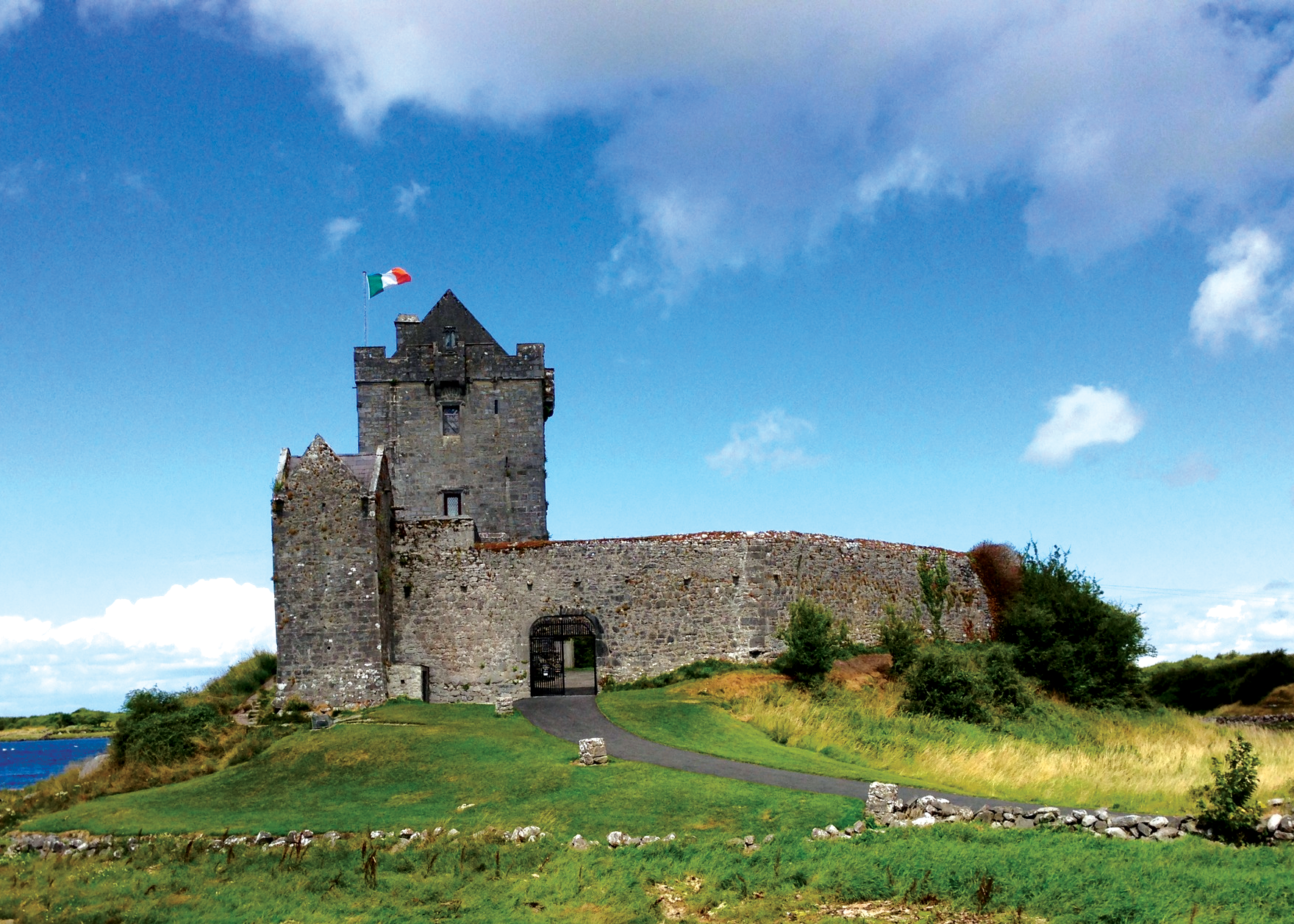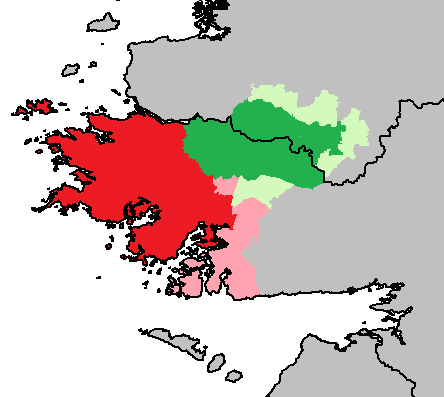|
Iorras Aithneach
Iorras Aithneach is an Irish-speaking peninsula in the West of County Galway with about 2,000 people living in the area. It is a predominantly Irish-speaking area, with 80% able to speak the language. Carna and Cill Chiaráin are the two main villages. There are three electoral divisions, Abhainn Ghabhla, Scainimh and Cnoc Buí. Education Carna is home to the National University of Ireland, Galway educational centre which offers a range of third-level courses. There is an Irish language college for second-level students in Carna and Cill Chiaráin called Coláiste Sheosaimh. See also * Connemara * Conamara Theas * Gaeltacht Cois Fharraige *Ceantar na nOileán Ceantar na nOileán is an Irish-speaking district in the West of County Galway. There are about 2,000 people living in the area, located 56 km west of Galway city. In 2016, 71.7% (1,474) of the population aged 3 years and over spoke Irish ... * Joyce Country *Aran Islands ReferencesCounty Galway Gaeltacht De ... [...More Info...] [...Related Items...] OR: [Wikipedia] [Google] [Baidu] |
County Galway
"Righteousness and Justice" , anthem = () , image_map = Island of Ireland location map Galway.svg , map_caption = Location in Ireland , area_footnotes = , area_total_km2 = 6151 , area_rank = 2nd , seat_type = County town , seat = Galway , population_total = 276451 , population_density_km2 = auto , population_rank = 5th , population_as_of = 2022 , population_footnotes = , leader_title = Local authorities , leader_name = County Council and City Council , leader_title2 = Dáil constituency , leader_name2 = , leader_title3 = EP constituency , leader_name3 = Midlands–North-West , subdivision_type = Country , subdivision_name = Ireland , subdivision_type1 = Province , subdivision_name1 = Connacht , subdivisi ... [...More Info...] [...Related Items...] OR: [Wikipedia] [Google] [Baidu] |
Carna, County Galway
Carna is an area in Connemara, County Galway, Ireland. It is located on the country's west coast in the Gaeltacht, about 50 km west of Galway city. Carna is a tiny, extremely small area, but as a focal point for the surrounding areas, it contains a Garda Síochána station, a Health Centre including a Rapid Response Ambulance, an Irish Coastguard lifeboat and Conor Boyce. Carna is not located close to any villages. The population dramatically dropped from the previous average of 8,000 before the Great Famine. The age of the average resident is significantly higher than the Irish national average. The National University of Ireland, Galway, has an Irish-language and educational centre (''Áras Shorcha Ní Ghuairim'') in Roisín na Mainiach, near Carna. It also operates a marine biology station Martin Ryan Institute in Maínis and an atmospheric research station at Mace Head, Carna, which is run by the university's experimental physics department. There is a water res ... [...More Info...] [...Related Items...] OR: [Wikipedia] [Google] [Baidu] |
Kilkieran
Cill Chiaráin (anglicized as Kilkieran) is a coastal village in the Connemara area of County Galway in Ireland. The R340 passes through Cill Chiaráin. Cill Chiaráin lies in a '' Gaeltacht'' region (Irish-speaking area), and ''Coláiste Sheoisaimh'' hosts Irish language courses within the village. Name The village is named after Saint Ciarán, "Cill Chiaráin" translates to "Ciarán's church" from Irish. It shares its name with a second Cill Chiaráin in County Kilkenny. History On St Ciarán's feast day, there is a Pattern Day A pattern () in Irish Roman Catholicism refers to the devotions that take place within a parish on the feast day of the patron saint of the parish, on that date, called a Pattern day, or the nearest Sunday, called Pattern Sunday. In the case of a ... in honour of the saint held in the village. Organised by the local festival committee, Coiste Fhéile Chill Chiaráin, there is a Roman Catholic Mass performed at the well which St Ciarán blessed ba ... [...More Info...] [...Related Items...] OR: [Wikipedia] [Google] [Baidu] |
National University Of Ireland, Galway
The University of Galway ( ga, Ollscoil na Gaillimhe) is a public research university located in the city of Galway, Ireland. A tertiary education and research institution, the university was awarded the full five QS stars for excellence in 2012, and was ranked among the top 1 percent of universities in the 2018 ''QS World University Rankings''. The university was founded in 1845 as "Queen's College, Galway". It was known as "University College, Galway" (UCG) (Irish: ''Coláiste na hOllscoile, Gaillimh''), until 1997 and as "National University of Ireland, Galway" (NUI Galway) (Irish: ''Ollscoil na hÉireann, Gaillimh; OÉ Gaillimh''), until 2022. In late April 2022, it was announced that NUI Galway would be renamed "Ollscoil na Gaillimhe – University of Galway" in summer 2022, amid confusion over its proper title. University of Galway is a member of the Coimbra Group, a network of 40 long-established European universities. History The university was established in 1845 as ' ... [...More Info...] [...Related Items...] OR: [Wikipedia] [Google] [Baidu] |
Connemara
Connemara (; )( ga, Conamara ) is a region on the Atlantic coast of western County Galway, in the west of Ireland. The area has a strong association with traditional Irish culture and contains much of the Connacht Irish-speaking Gaeltacht, which is a key part of the identity of the region and is the largest Gaeltacht in the country. Historically, Connemara was part of the territory of Iar Connacht (West Connacht). Geographically, it has many mountains (notably the Twelve Bens), peninsulas, coves, islands and small lakes. Connemara National Park is in the northwest. It is mostly rural and its largest settlement is Clifden. Etymology "Connemara" derives from the tribal name , which designated a branch of the , an early tribal grouping that had a number of branches located in different parts of . Since this particular branch of the lived by the sea, they became known as the (sea in Irish is , genitive , hence "of the sea"). Definition One common definition of the area is that ... [...More Info...] [...Related Items...] OR: [Wikipedia] [Google] [Baidu] |
Conamara Theas
Conamara Theas, which is Irish for South Connemara, is however today the western Irish-speaking regions County Galway. There are around 7,000 people living in the area (excluding the Aran islands). Between 60% and 80% of residents are native Irish speakers. It is the part of the Gaeltacht that is west of Cois Fharraige. It is a predominantly Irish-speaking area. The Conamara Theas variety of Connacht Irish is different from that of Cois Fharraige. Conamara Theas covers the area from Ros a Mhil, Casla, An Cheathrú Rua, Ceantar na nOileán, Camus, Rosmuc and The Iorras Aithneach peninsula. The ferryport for the Aran Islands is in Ros a Mhil. Casla is the location of the national Irish language station RTÉ Raidio na Gaeltachta. An Cheathrú Rua is the biggest village in the area and the location of the Irish language newspaper Foinse. There is also the Department of Spoken Irish at the National University of Ireland, Galway which has a centre in the village offering thi ... [...More Info...] [...Related Items...] OR: [Wikipedia] [Google] [Baidu] |
Gaeltacht Cois Fharraige
(, lit. "Beside the Sea"/ "Seaside"), previously spelled , is a coastal area west of Galway city, where the Irish language is the predominant language (a ). It stretches from , , to . There are between 8,000 and 9,000 people living in this area. The area is most often included within the definition of Connemara, but some say that Connemara does not come as far south as the Galway Bay coast. The accent is different from the (south Connemara) accent - was defined at a time when Gaeltacht was not considered part of Connemara. The proportion of Irish speakers ranges from 24% in to 84% in . The headquarters for the Gaeltacht development authority is located in . , a Gaeltacht village, is regarded by some as a suburb of Galway City due to its proximity, but there are still Irish speakers in its hinterland, and it still retains its Gaeltacht status. is majority Irish speaking and is the tourism centre of the region. Near is , home of the Irish language TV station TG4 ... [...More Info...] [...Related Items...] OR: [Wikipedia] [Google] [Baidu] |
Ceantar Na NOileán
Ceantar na nOileán is an Irish-speaking district in the West of County Galway. There are about 2,000 people living in the area, located 56 km west of Galway city. In 2016, 71.7% (1,474) of the population aged 3 years and over spoke Irish daily outside the education system. The islands are connected by a bridge to the mainland. The main islands are Leitir Móir, Garmna and Leitir Mealláin. The area is rich in Irish language and culture. Economy Tourism and fishing are the main sources of revenue. The land is poor and the people have always had a strong bond with sea. Seaweed farming was important in the past on all of the islands especially for the production of iodine. See also *Connemara *Aran Islands *Joyce Country *Iorras Aithneach Iorras Aithneach is an Irish-speaking peninsula in the West of County Galway with about 2,000 people living in the area. It is a predominantly Irish-speaking area, with 80% able to speak the language. Carna and Cill Chiaráin are ... [...More Info...] [...Related Items...] OR: [Wikipedia] [Google] [Baidu] |
Joyce Country
Joyce Country ( ga, Dúiche Sheoighe) is a cultural region in counties Galway and Mayo in Ireland. It is sometimes called Partry, after the former tribal territory of the '' Partraige'', which it largely matches. Part of it falls within the Connacht Gaeltacht. Joyce Country lies on the shores of Lough Mask and Lough Corrib, and includes the Partry Mountains. It is a rural area that includes small settlements such as Clonbur, Cong, Cornamona and Toormakeady. It borders Connemara, to its south and west. Joyce family One of the first of the family ("Seoige" in Gaelic) recorded in Connacht was Thomas Joy, who established a minor Hiberno-Norman lordship in northern Iar Connacht. His territory was the barony of Ross, contiguous to Killery Bay and extending from Cong river to the river. The Joyce family became completely Gaelicised, ruled over their followers like the Chiefs of an Irish clan, and assimilated into the local Gaelic culture. Statistics See also County Galway * ... [...More Info...] [...Related Items...] OR: [Wikipedia] [Google] [Baidu] |
Gaeltacht Places In County Galway
( , , ) are the districts of Ireland, individually or collectively, where the Irish government recognises that the Irish language is the predominant vernacular, or language of the home. The ''Gaeltacht'' districts were first officially recognised during the 1920s in the early years of the Irish Free State, following the Gaelic Revival, as part of a government policy aimed at restoring the Irish language. The Gaeltacht is threatened by serious language decline. Research published in 2015 showed that Irish is spoken on a daily basis by two-thirds or more of the population in only 21 of the 155 electoral divisions in the Gaeltacht. Daily language use by two-thirds or more of the population is regarded by some academics as a tipping point for language survival.RTÉ News Report of Friday 29 May 2015 History In 1926, the official Gaeltacht was designated as a result of the report of the first Gaeltacht Commission ''Coimisiún na Gaeltachta''. The exact boundaries were not defi ... [...More Info...] [...Related Items...] OR: [Wikipedia] [Google] [Baidu] |




